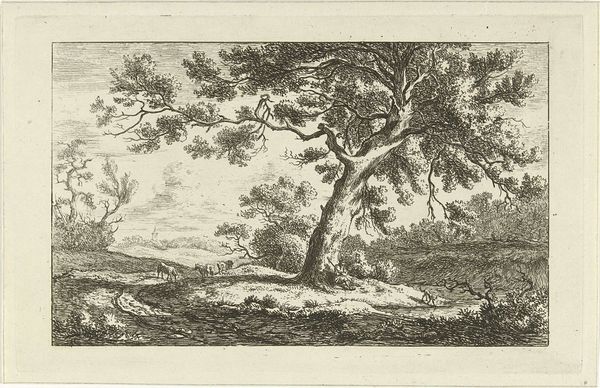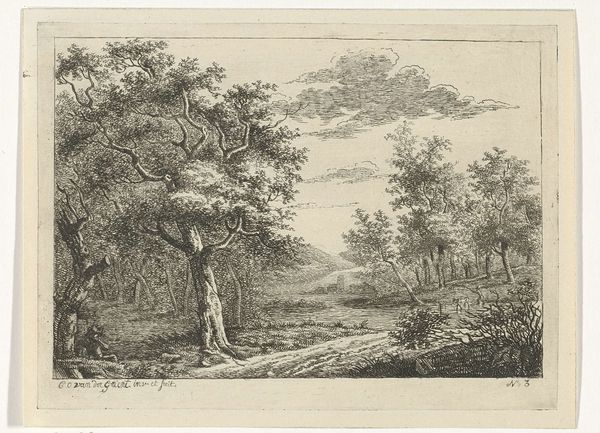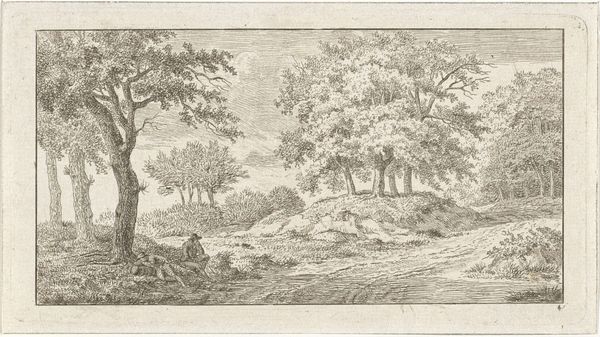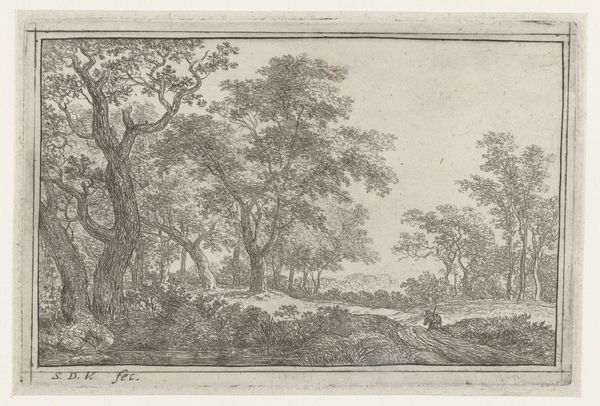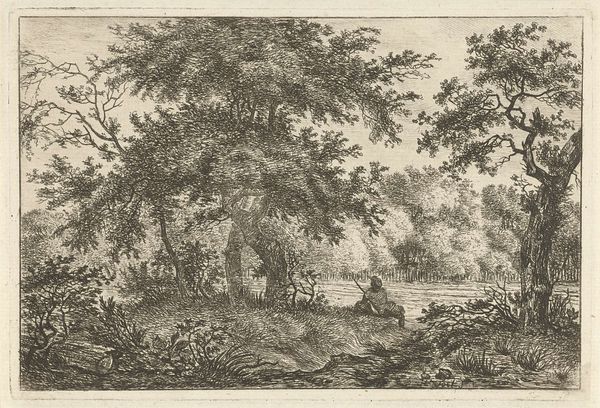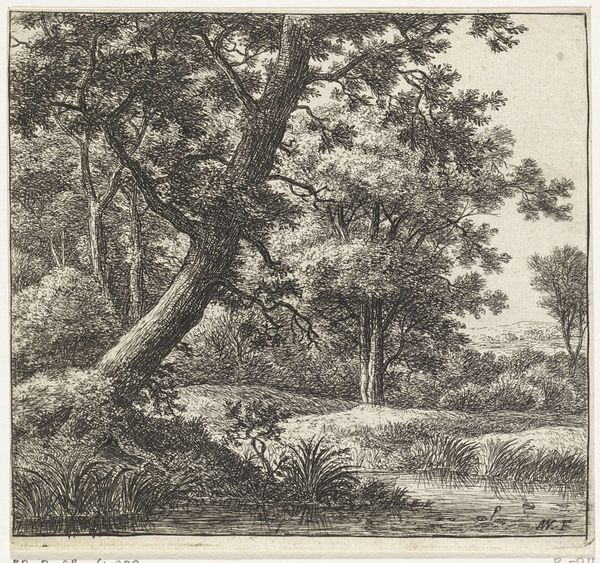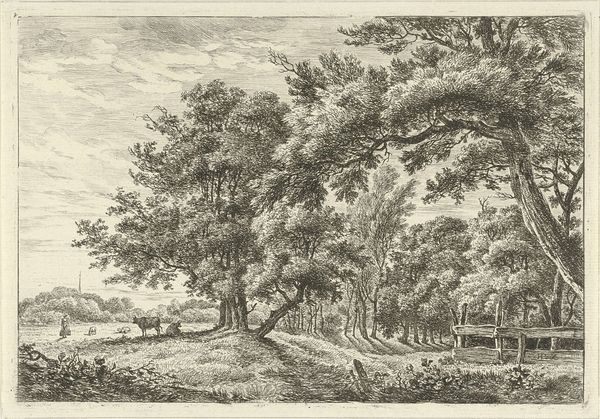
drawing, print, ink, engraving
#
drawing
# print
#
landscape
#
ink
#
romanticism
#
engraving
Dimensions: height 122 mm, width 169 mm
Copyright: Rijks Museum: Open Domain
Editor: Here we have "Weg tussen de bomen," or "Road Through the Trees," made between 1784 and 1808 by Franciscus Andreas Milatz. It looks like it's an engraving or perhaps a print of a drawing. The textures are incredibly detailed; you can practically feel the rough bark of the trees. I'm curious, what do you see in this piece beyond the initial idyllic landscape? Curator: It’s interesting you focus on texture right away. For me, the real story here lies in the *process* – how the artist painstakingly transformed natural materials (metal, ink, paper) through labor to create this image. It makes you consider the economics of artmaking at the time. How accessible would these materials and skills have been? Who would have been the consumers? Editor: That's a fascinating way to think about it. I was more focused on the Romanticism of the scene itself – the figures almost disappearing into nature, a certain longing... Curator: And the 'Romanticism' is also constructed isn't it? It relies on the availability and perceived value of things like "nature," on specific kinds of inks and papers and the skills of the engraver. Romanticism itself becomes a kind of consumer product through these prints. What do you think about the intended audience for prints like these? Would they have understood this material translation of nature into a commodity? Editor: Probably only a limited section of society given it being a print and depending on its price point! Maybe those aspiring to higher social classes to learn the aesthetic values. I’d never considered it that way, actually, that even artistic movements like Romanticism are also dependent on consumption and accessibility. Curator: Precisely! By examining the means of production and distribution, we can really unpack the social and economic underpinnings of art history itself. It changes how we see, doesn't it? Editor: It definitely does! I’ll be looking at materials a lot more closely from now on. Thanks for widening my perspective.
Comments
No comments
Be the first to comment and join the conversation on the ultimate creative platform.
